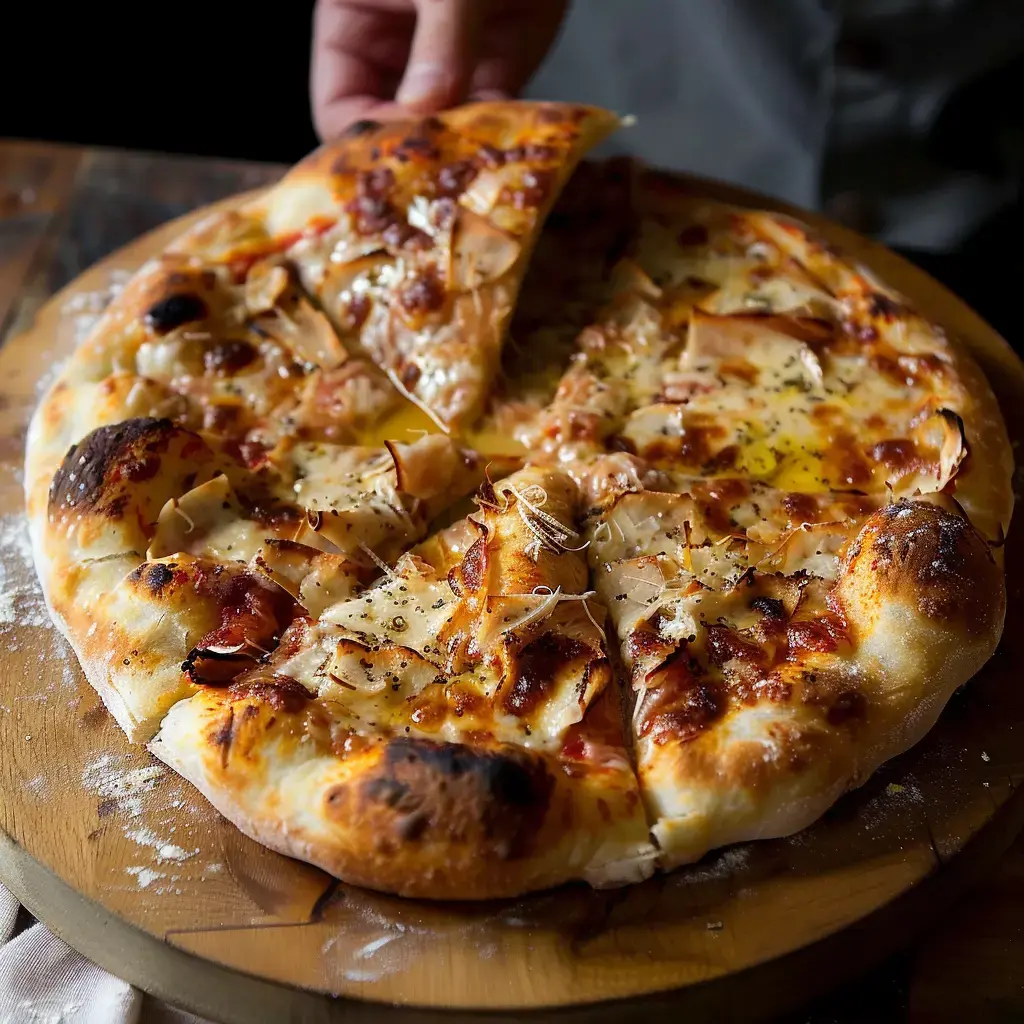 Pin it
Pin it
This pizza recipe came from spending a whole year trying to perfect homemade Neapolitan pizza. Taking ideas from Jim Lahey's no-knead method, I managed to create a light, airy dough with a crispy crust that works great with any topping you want. It's truly a delight for anyone who loves pizza.
What makes it work
The thing that makes this recipe stand out is how basic yet versatile it is. The no-knead approach takes minimal effort but gives you amazing results with a bubbly crust just like the best pizza shops. Good quality stuff and a pizza stone really make all the difference.
What you'll need
- Flour: 250g of T55 or T65 flour for a tasty, stretchy dough.
- Yeast: 1/8 teaspoon dry yeast for slow rising.
- Salt: 8g for balanced flavor.
- Sugar: 2g to help browning and taste.
- Water: 185g of lukewarm water for just the right moisture.
How to make it
- Mixing everything
- I combine flour, yeast, sugar, and salt in a big bowl. Then I pour in water and stir just enough to mix it all together. I let it sit out for 24 hours at room temperature.
- Getting the oven ready
- I heat my oven to 280°C with my pizza stone inside for 30 minutes.
- Shaping the dough
- I split my dough into two balls on a floured surface and let them rest for 45-60 minutes.
- Stretching it out
- I gently push the dough outward with my fingertips, keeping the edges thicker for a nice rim.
Tips for best results
The trick is getting your oven and stone really hot for that crispy bottom. I suggest using baking paper if you're new to this. Don't pile on too many toppings or your pizza won't cook right and will end up heavy.
 Pin it
Pin it
Topping ideas
You can top it with anything you want. Try a classic Margherita, a white pizza with bechamel sauce, or even leftovers like shepherd's pie can turn into an awesome pizza. I often serve it with a small green salad to make it a complete meal.
Frequently Asked Questions
- → Why is a 24-hour dough rest important?
- The long resting time improves flavor and texture. Enzymes break starch into sugars, making the dough tastier and better structured.
- → Can I use less yeast?
- Using less yeast is intentional. Slow fermentation with a small amount adds more flavor and gives the dough a superior texture.
- → Does oven temperature really matter?
- Yes, very high heat is key. It creates a crispy crust on the outside while keeping it soft inside, just like in a pizza shop.
- → Can I prep the dough early?
- You can let it rest for up to 72 hours in the fridge. Longer resting adds even more complex flavors.
- → Why split the dough?
- This makes enough for two medium pizzas. Smaller portions are easier to handle and roll out.
